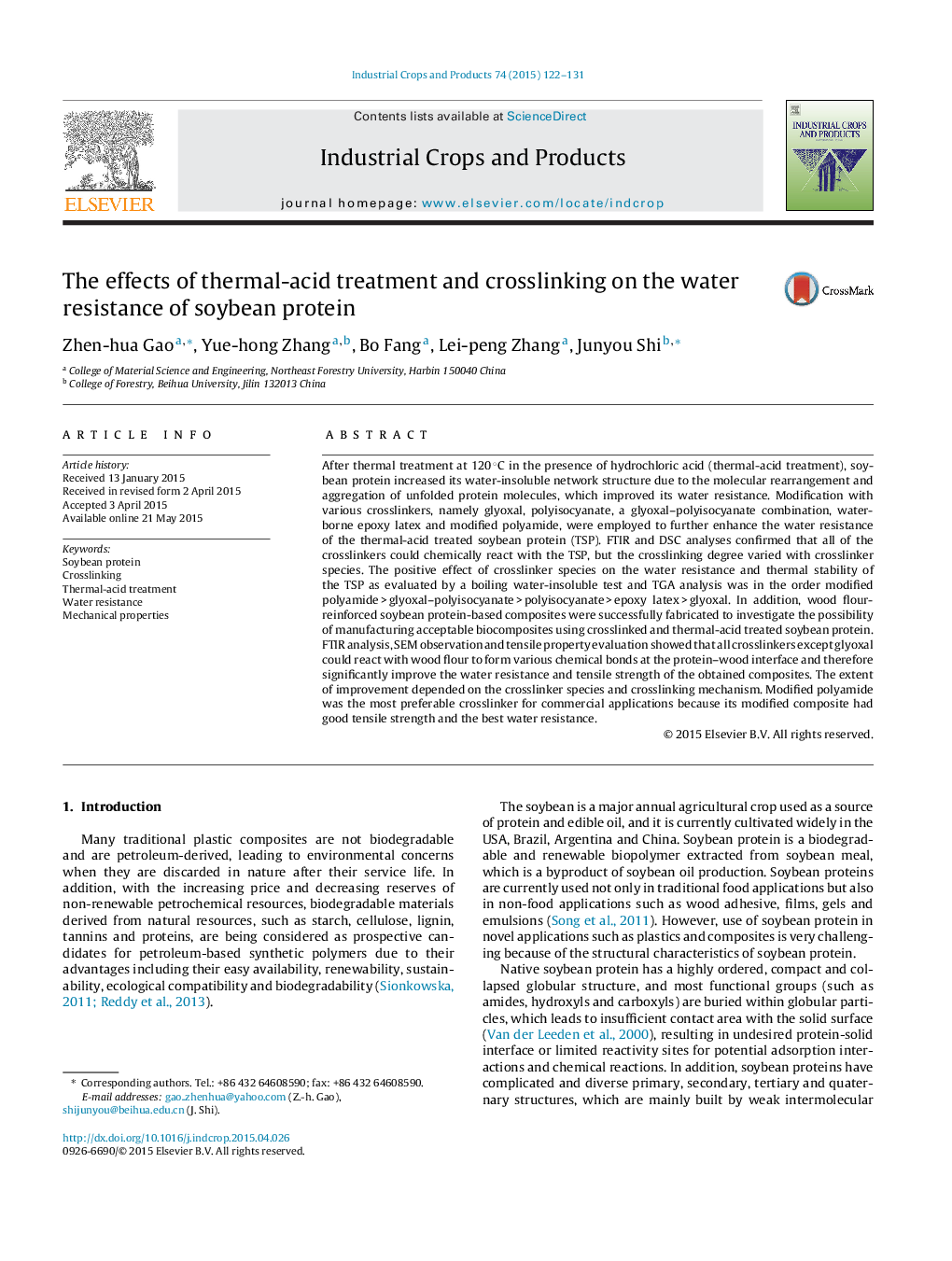| کد مقاله | کد نشریه | سال انتشار | مقاله انگلیسی | نسخه تمام متن |
|---|---|---|---|---|
| 6376020 | 1624835 | 2015 | 10 صفحه PDF | دانلود رایگان |
- Thermal-acid treatment was applied to improve the water resistance of soybean protein.
- Crosslinking further improved the water resistance of soybean protein.
- The improving mechanisms were proposed and confirmed by FTIR, DSC, TGA, SEM and composite evaluation.
- The water resistance of soy protein was improved significantly.
After thermal treatment at 120 °C in the presence of hydrochloric acid (thermal-acid treatment), soybean protein increased its water-insoluble network structure due to the molecular rearrangement and aggregation of unfolded protein molecules, which improved its water resistance. Modification with various crosslinkers, namely glyoxal, polyisocyanate, a glyoxal-polyisocyanate combination, waterborne epoxy latex and modified polyamide, were employed to further enhance the water resistance of the thermal-acid treated soybean protein (TSP). FTIR and DSC analyses confirmed that all of the crosslinkers could chemically react with the TSP, but the crosslinking degree varied with crosslinker species. The positive effect of crosslinker species on the water resistance and thermal stability of the TSP as evaluated by a boiling water-insoluble test and TGA analysis was in the order modified polyamide > glyoxal-polyisocyanate > polyisocyanate > epoxy latex > glyoxal. In addition, wood flour-reinforced soybean protein-based composites were successfully fabricated to investigate the possibility of manufacturing acceptable biocomposites using crosslinked and thermal-acid treated soybean protein. FTIR analysis, SEM observation and tensile property evaluation showed that all crosslinkers except glyoxal could react with wood flour to form various chemical bonds at the protein-wood interface and therefore significantly improve the water resistance and tensile strength of the obtained composites. The extent of improvement depended on the crosslinker species and crosslinking mechanism. Modified polyamide was the most preferable crosslinker for commercial applications because its modified composite had good tensile strength and the best water resistance.
Journal: Industrial Crops and Products - Volume 74, 15 November 2015, Pages 122-131
